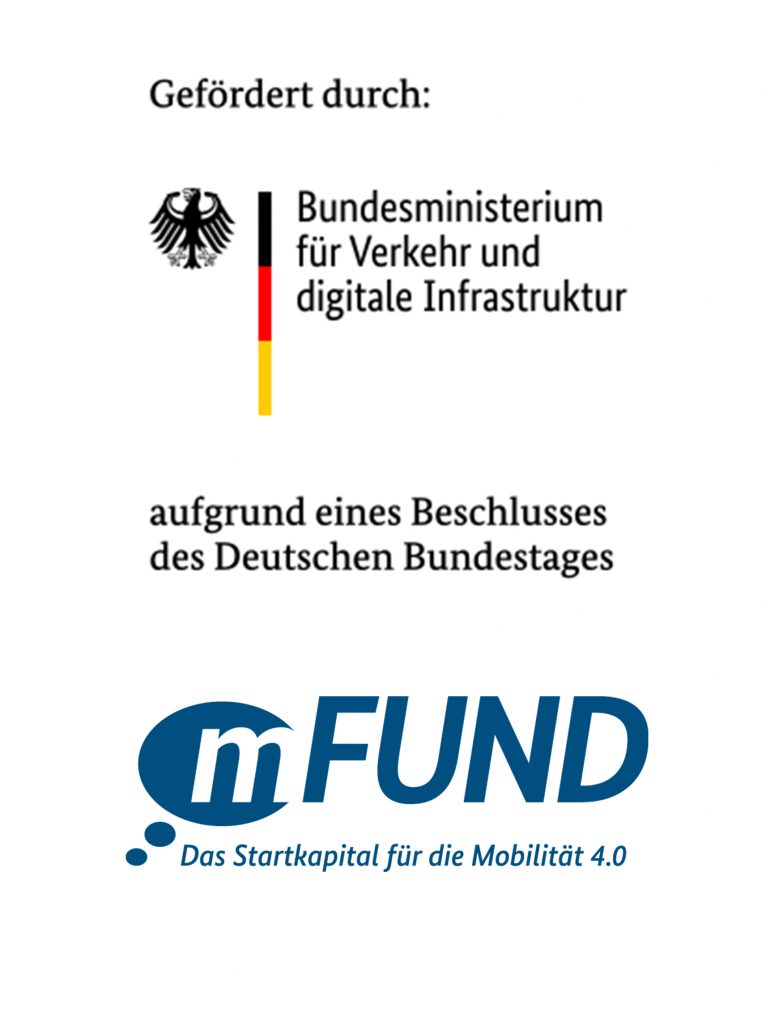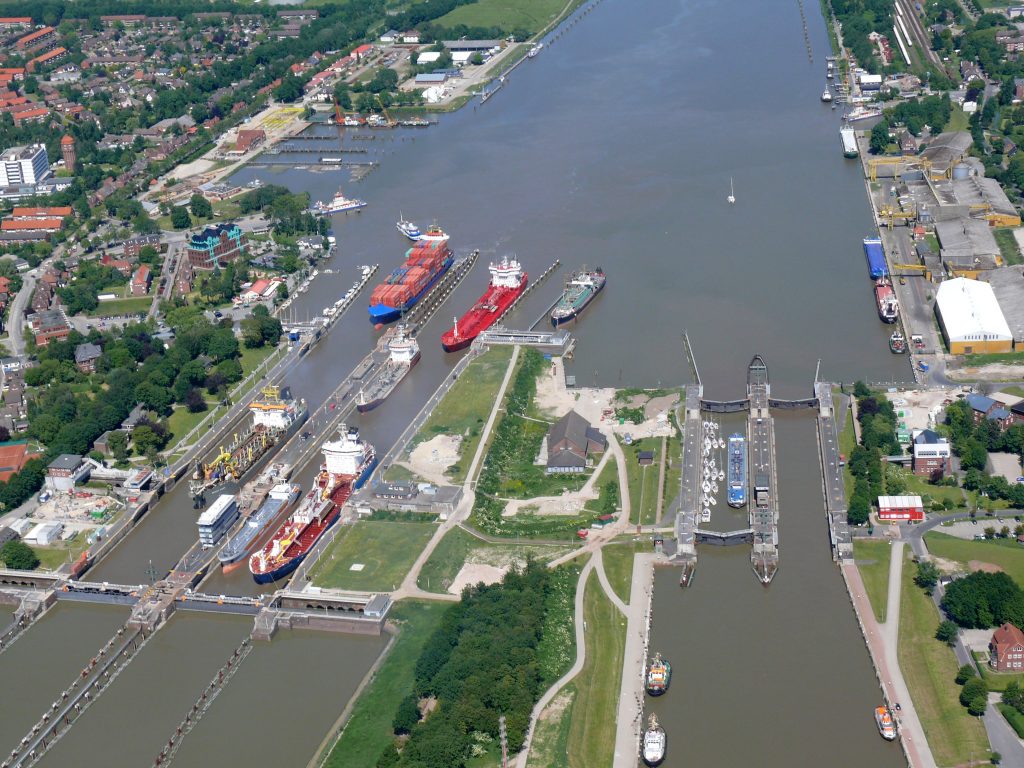SchleusenNOK40 research project creates intelligent planning and information system for the North Sea Canal

In order to optimize their processes, more and more sea and inland ports worldwide are using functional IT systems. These enable clear control and ensure a smooth exchange of information between the parties involved. In April 2020, the Federal Waterways and Shipping Administration will start the SchleusenNOK40 project to optimize lock management on the North Sea Canal together with its partners dbh Logistics IT AG, Fraunhofer Institute for Open Communication Systems FOKUS and TTS TRIMODE Transport Solutions GmbH. By evaluating the available data streams, an intelligent lock management and information system for the Nord-Ostsee Canal is created in combination with the practical experience of the specialists on site. Enak Ferlemann, Parliamentary Under-Secretary of State at the Federal Minister for Transport and Digital Infrastructure: “This project is a prime example of how digitalisation is driving shipping forward: lock operation is becoming even more transparent, efficient and customer-friendly. In this way, we not only keep the canal attractive for shipping, but also indirectly improve the logistics industry in the following ports.”
The project is funded by the Federal Ministry of Transport and Digital Infrastructure (BMVI) with more than 1.5 million euros as part of the research initiative mFUND (Modernity Fund).
A project for improved freight logistics on the North Sea Canal
As a strategic link between the North Sea and the Baltic Sea, the canal is already one of the most frequently used waterways in the world and contributes to the resource-saving and sustainable orientation of logistics. At the same time, however, the area has been affected by many construction sites in recent years, which repeatedly presents the responsible lock masters with the challenge of safe and structured lock operation.

In order to ensure improved processes on the Nord-Ostsee Canal despite the extensive construction measures and the increased traffic volume, support for lock management through digitalisation is a decisive basis. A ship data-based system is missing so far. The SchleusenNOK40 project aims to significantly simplify inflow management in order to make it more transparently efficient and thus more customer-friendly.
On the basis of comprehensive data sets, tailor-made forecasts of the utilization of the locks are made in order to support the lock personnel in their decisions. At the same time, feedback to the Electronic Waterways Information Service enables reliable information on the traffic situation on the canal and to provide users of the waterway with the widest possible information. This is particularly important for the economic predictability of supply chains in order to reduce waiting and handling times and effectively reduce costs.
Digitization and experience as the basis for a sustainable system
When developing the system, project partners rely on the pooling of comprehensive data sets, such as weather and climate data, navigation and geodata. Forecasts are made from this data and using machine learning and stochastic analysis methods. At the same time, problem modelling, solution and optimization approaches are used, among other things, in the field of artificial intelligence. The goal is that the forecasts become increasingly accurate in order to be able to reliably and transparently indicate the times with the highest utilization.
In addition, a knowledge-based planning tool for optimised lock occupancy will be developed, in which the experience of the lock personnel will be incorporated and supported in the operation of the locks. However, the planned system remains open and continuously expandable in order to adapt to the developments of channel management and to have a structured basis available even in the event of further developments.
The start of a successful project
The foundation stone for the SchleusenNOK40 project was laid during the kick-off on 06.04.2020. The project is to be completed by 31 March 2023 in order to simplify the inflow management of the canal. In the requirements analysis, the execution of workshops with as many users as possible is planned. In this way, all requirements can be recorded in order to make the handling of the system as simple and needs-based as possible. Another important aspect in the first phase is the analysis of existing data sources in terms of usability, so that technical and other prerequisites can be tested and safe implementation in practice is made possible.
Through the participation of the partners dbh, Fraunhofer FOKUS and TTS TRIMODE, a strong and experienced team is involved in implementing the research project SchleusenNOK40 technically and safely in the existing time frame. In this way, the rest of the project will be able to support the lock staff in all active decisions and to fundamentally increase transparency. For example, digitization leads to a reliable and structured approach at the lock in order to simplify planning and information flow and to benefit from a modern and enriching system after the completion of the research project.
About the mFUND of the BMVI
As part of the mFUND research initiative, the BMVI has been supporting research and development projects around data-based digital applications for mobility 4.0 since 2016. In addition to financial support, the mFUND supports the networking between actors from politics, business and research as well as access to the data portal mCLOUD with various event formats. For more information, see www.mfund.de.
About the project partners
dbh Logistics IT AG is one of the leading companies in logistics IT in Germany. Since 1973, the company has been developing industry solutions for shipping and port, forwarding and logistics as well as industry and trade in the fields of port management, customs and foreign trade, compliance, transport management and SAP. dbh offers its customers the complete service in the implementation of IT projects. The portfolio ranges from consulting to conception and implementation to the operation of the complete IT landscape of customers. In this project, dbh will take over the overall coordination, as well as the leading and integrating role in the conception and realization of the lock management platform including the connection of the participants.
Fraunhofer FOKUS researches digital networking and its impact on society, economy and technology. Since 1988, it has supported business enterprises and public administration in the design and implementation of digital change. With around 450 employees in Berlin and an annual budget of 33 million euros, Fraunhofer FOKUS is one of the largest ICT institutes in the Fraunhofer Society. It generates about 80 percent of its budget from contracts with industry and the public sector. As a scientific partner, Fraunhofer FOKUS brings its planning and predictive skills to the project through appropriate algorithm selection and adaptation as well as the development of software components.
The team of TTS TRIMODE Transport Solutions GmbH has been advising ministries, local authorities and the private sector on the solution of complex issues and research projects in passenger and freight transport for several decades. For more than 30 years, team members of TTS TRIMODE have been involved in transport science issues and problems as well as continuously working on the Federal Transport Route Planning of the Federal Government (BVWP). The main focus of TTS TRIMODE is the preparation of transport-scientific studies and expert opinions, forecasts, benefit-cost and feasibility studies as well as regional economic analyses. In the project, TTS TRIMODE will carry out a feasibility and risk analysis with regard to the extended lock management and information system.
The Waterways and Shipping Administration (WSV) operates the locks on the Nord-Ostsee Canal (NOK) and is responsible for the safety and ease of navigation. The requirements arose from this task will be introduced into the project, among other things, in the context of workshops. In addition, the business processes at the floodgates of the WSV can be collected by the project. The WSV introduces the aspects “user needs (lock), usability, feasibility” into the project.

